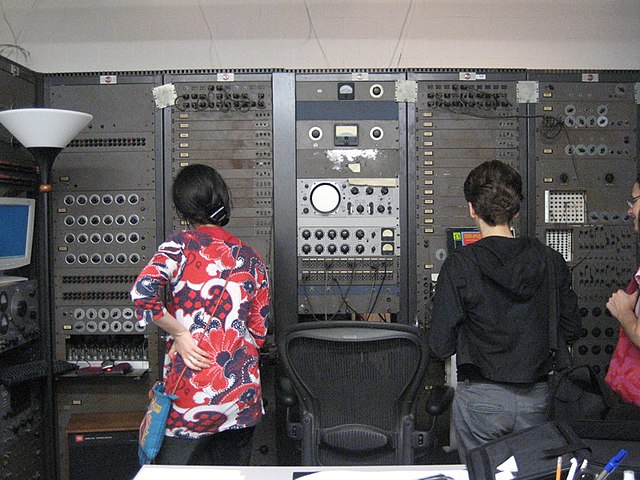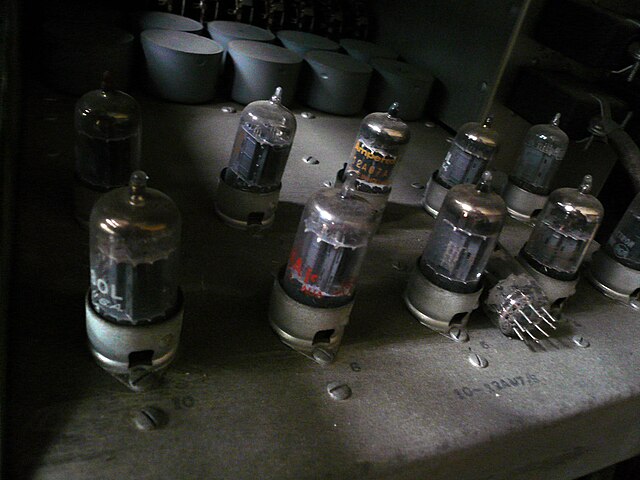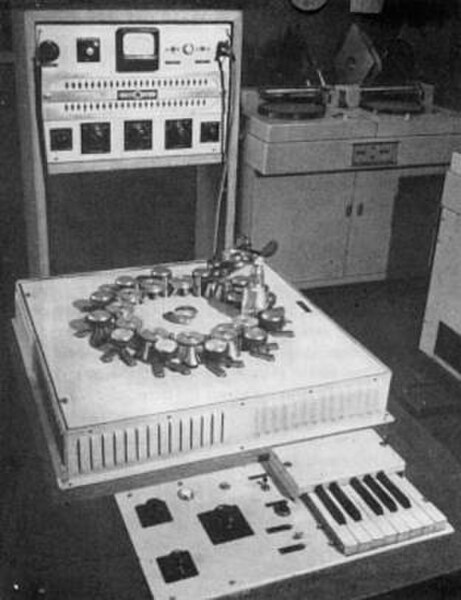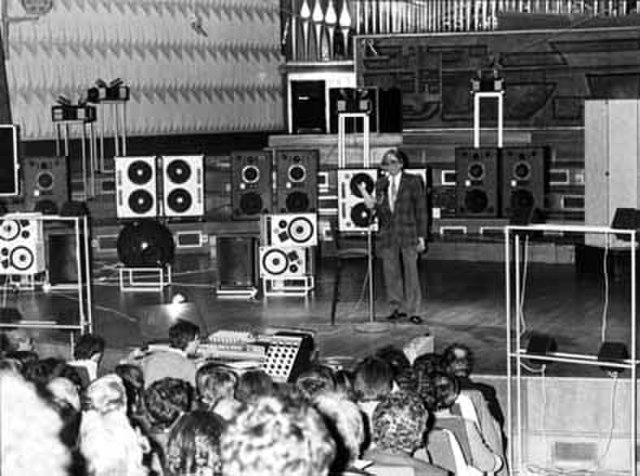The Computer Music Center (CMC) at Columbia University is the oldest center for electronic and computer music research in the United States. It was founded in the 1950s as the Columbia-Princeton Electronic Music Center.
RCA Mark II Sound Synthesizer, Computer Music Center at Columbia University
The "Victor" (nickname of RCA Mark II Sound Synthesizer) at the CMC was one of the first synthesizers. Exponents thought it would replace the orchestra, but it turned out to be difficult to keep consistent. Instead it was given to Columbia which used it to teach avant-garde electronic musicians.
Electronic music broadly is a group of music genres that employ electronic musical instruments, circuitry-based music technology and software, or general-purpose electronics in its creation. It includes both music made using electronic and electromechanical means. Pure electronic instruments depended entirely on circuitry-based sound generation, for instance using devices such as an electronic oscillator, theremin, or synthesizer. Electromechanical instruments can have mechanical parts such as strings, hammers, and electric elements including magnetic pickups, power amplifiers and loudspeakers. Such electromechanical devices include the telharmonium, Hammond organ, electric piano and electric guitar.
Front page of Scientific American in 1907, demonstrating the size, operation, and popularity of the Telharmonium
Leon Theremin demonstrating the theremin in 1927
Phonogene (1953), a tape machine for modifying the sound structure, developed by Pierre Schaeffer et al. at GRMC
Pierre Schaeffer presenting the Acousmonium (1974) that consisted of 80 loudspeakers for tape playback, at GRM






